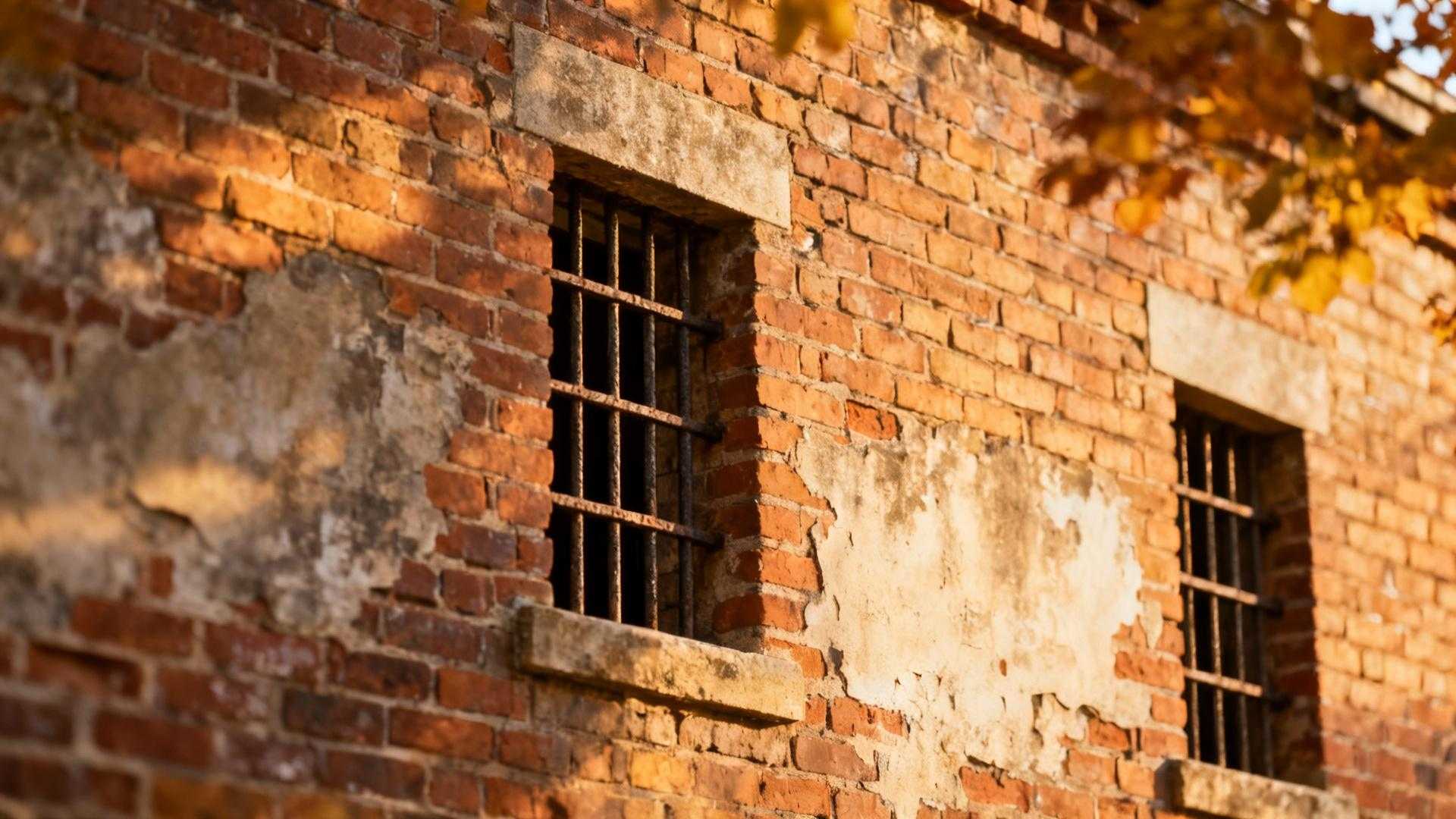Walking past Colonial Williamsburg’s grand Governor’s Palace, most visitors never notice the modest brick building tucked quietly on Nicholson Street. This 30×20-foot structure holds more authentic American history than all the reconstructed mansions combined.
The Public Gaol—pronounced “jail” but spelled in colonial fashion—housed Blackbeard’s pirates, Revolutionary War spies, and runaway slaves within walls so intimate you can touch the original shackles. While tourists photograph the palace’s opulent rooms, locals know this tiny prison witnessed America’s rawest colonial truths.
Inside these cramped quarters, history becomes visceral. The 10×10-foot cells where notorious criminals awaited execution tell stories no grand ballroom ever could.
The intimate scale where America’s darkest secrets unfolded
Original cells smaller than most modern bedrooms
Each prison cell measures exactly ten feet square—smaller than a typical master bathroom today. Men and women occupied separate cells on the first floor, while the gaoler’s family lived upstairs in quarters barely larger than the prison below. This forced proximity created an intensity impossible to replicate in sprawling modern museums.
Exercise yard designed for maximum containment
The walled exercise yard spans just 20 square feet, roughly the size of a modern parking space. Here, condemned prisoners like Highland warriors facing execution spent their final days contemplating fate within brick walls that seemed to close in daily.
Notorious inmates who shaped American justice
Blackbeard’s crew awaited execution in these cells
In 1718, thirteen captured pirates from Blackbeard’s fleet crammed into these tiny spaces, their shackles still visible today. Unlike sanitized pirate museums elsewhere, the Gaol preserves the actual iron restraints that bound these men before their march to Capitol Landing Road gallows. You can run your fingers along the original metal.
Revolutionary War prisoners from both sides
British loyalists and American patriots shared these cramped quarters during the Revolution, creating tensions that exploded into violence within the narrow confines. The building’s modest size intensified every political argument, personal grudge, and desperate escape attempt. Unlike reconstructed UNESCO sites that sanitize history, the Gaol preserves authentic colonial brutality.
Authentic colonial details tourists never see
Underground cells designed to prevent escape
Archaeological excavations revealed timber foundations specifically installed to prevent prisoners from tunneling out. Original leg irons, prison hardware, and even skeletal remains emerged from the soil, proving this tiny building’s deadly serious purpose. The Governor’s Palace offers no such tangible connection to colonial reality.
Unheated cells through Virginia winters
While the gaoler’s quarters featured fireplaces, the prison cells remained deliberately unheated through brutal Virginia winters. Prisoners huddled together for warmth in spaces barely large enough for sleeping. This harsh reality contrasts sharply with the palace’s heated luxury just blocks away, revealing colonial Virginia’s stark social divisions.
Why this tiny space reveals more than grand palaces
No reconstruction—everything remains original
Unlike Williamsburg’s rebuilt Governor’s Palace, the Gaol retains its original 1701 brick walls, cell doors, and foundation stones. When you touch these surfaces, you’re connecting directly with colonial America—no interpretation necessary. Like medieval villages with secret passages, the Gaol transports visitors to another era through authentic architecture.
Stories the palace tour guides won’t tell
The Gaol housed runaway slaves, debtors, and mentally ill colonists—the people polite society preferred to forget. Their stories, etched into cell walls through centuries of confinement, reveal colonial America’s uncomfortable truths. The palace celebrates wealth and power; the Gaol exposes the system’s brutal foundation.
Frequently asked questions about America’s tiniest historical treasure
How much does visiting the Public Gaol cost?
The Gaol is included in your Colonial Williamsburg admission ticket—no additional fees required. While the Governor’s Palace charges premium rates for guided tours, this authentic colonial prison offers deeper historical impact at no extra cost.
What’s the best time to visit without crowds?
Early morning or late afternoon visits provide the most intimate experience. October’s perfect weather makes this tiny space even more atmospheric, especially when autumn light filters through the original barred windows.
Can you actually touch the original artifacts?
Yes—the original shackles, cell doors, and brick walls remain accessible to visitors. This hands-on connection to colonial justice creates emotional impact impossible at reconstructed sites where everything sits behind protective barriers.
This tiny prison proves that authentic history lives in intimate spaces, not grand reconstructions. When you’re ready for real colonial America—complete with its harsh truths and uncomfortable realities—skip the palace tours and step inside the Gaol’s cramped cells.
Here, within walls that once contained America’s most notorious criminals, you’ll discover the raw human drama that shaped our nation’s character. Sometimes the smallest spaces hold the biggest secrets.
